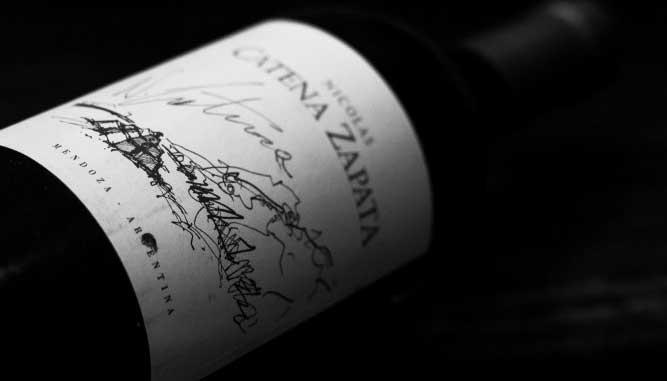His own vineyard manager told him that Malbec would never ripen in the high-altitude elevations at
Gualtallary. But it did, and beautifully. In fact, Nicolás found that Mendoza was exceptional for vine growing, with
each high-altitude valley providing a unique flavor and aroma profile of the same varietal. He found that the poor
soils near the Andes, discarded by the original European immigrants because of their low fertility, were actually ideal
for quality viticulture; they provided a terroir where vines had naturally low yields and ripened slowly over the summer,
making wines of great balance, elegance and deliciously soft tannins.
Then came the challenge of what to do with Malbec. Nicolás did not readily share his father’s—or his grandfather's—confidence in Malbec.
Most of the wines admired by wine collectors around the world at that time were made of either Cabernet Sauvignon blends or Chardonnay, and Nicolás
wondered if Malbec would ever be able to reach such heights; Indeed, this was important to him in his principal goal of making Argentine wines that
could stand with the best of the world. But after his father Domingo died in 1985, Nicolás made it his mission to see if his father’s intuition was right.
It took 5 years of working on the 85-year-old Angélica vineyard before Nicolás was satisfied enough to make a Catena Malbec in 1994.
It was an unqualified success. "Kudos to Nicolás Catena," wrote the famed world critic Robert Parker Jr. about
this first vintage. And then came the ranking as Argentina's #1 Malbec in the Wall Street Journal's first ever feature on Malbec.
It would take a decade after that for Malbec to become a well-known wine varietal around the world.
Nicolás was then faced with yet another challenge: Which Malbec vine selections should he plant in the new vineyards? Since
there was no existing Argentine Malbec selection available, Nicolás decided to bring cuttings from Cahors, France. The French Chardonnay
cuttings had given him his best white. But results for French Malbec cuttings were disappointing; the French Malbec grew large berries
and bunches with rustic aromas and flavors. Nicolás set out to develop his own selection of Argentine Malbec cuttings, planting 135 cuttings,
one per row, in the La Pirámide vineyard.
Of these, he selected the best five - those with the smallest berries, balanced yields, most textured flavors -
and began to plant them in different terroirs and altitudes in the Uco Valley. To this day, the Catena cuttings, as this original
selection is called, are an important part of the flavor profile, elegance and typicity of the Catena family's Malbecs.




